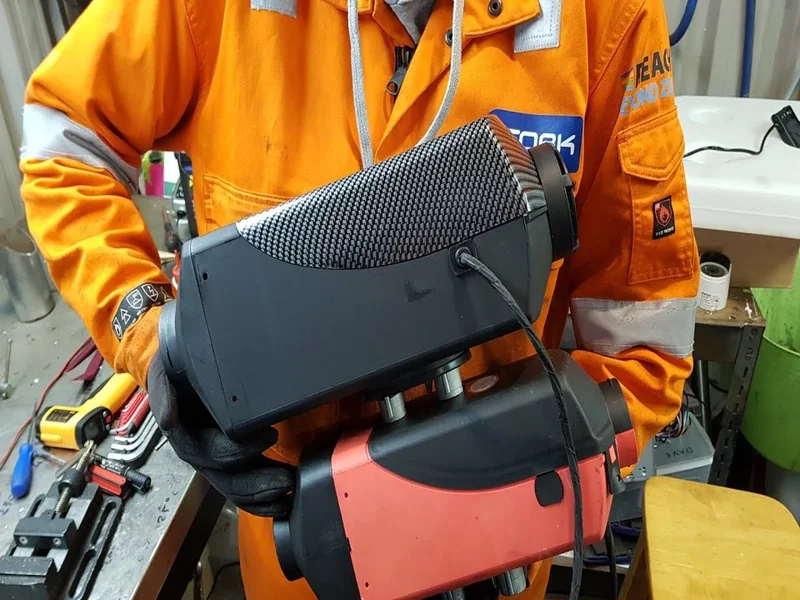It’s tough to beat the (almost) unlimited freedom you get with a whole home attached to a set of wheels the way it is with an RV.
You get all the benefits of permanent lodging – including plenty of electrical outlets for all your modern gadgets, gizmos, and appliances – with the added benefit of (literally) being able to pick up and move anytime you’d like.
Even if it’s just to change your scenery a little bit!
What a lot of new RV owners want to know, though, is if there home on wheels stays a home on wheels even while it’s barreling down the road or if all of those accommodations “turn off” when the RV is driving.
Do outlets work in an RV while you are cruising the highways and byways?
Typically, outlets in an RV are only going to be operational when the onboard generator or inverter is kicked on. This can be done while your vehicle is cruising local roads, streets, or highways – but it can introduce a couple of issues.
We cover that more in-depth below!
Will My Outlets Work While My RV is Driving?
Yes, all the outlets in your RV can “go live” and provide power – on-demand power – to your appliances, your gadgets, and your phones or tablets (amongst other electronics) even while you are driving.
This is hugely beneficial for folks that have a couple of passengers on board that want to be able to charge their phones while they are headed to a new destination and have a little bit of music – or even a movie and TV on – while cruising, too.
At the same time, it’s not always the smartest thing in the world to have a bunch of electronics powered on while you’re trying to drive.
The last thing you need to worry about is a TV in the back distracting you from the road ahead or an electric appliance turning on (or flipping off) and surprising you while you are behind the wheel, too.
Sometimes it’s not even legal to have electronics powered on while your RV is in motion!
What Provides the Power to My Outlets?
Before we get deeper into the nuts and bolts of powering your outlets while you are driving, it’s important to highlight how these outlets in your RV get power in the first place.
Inverter
The inverter in your RV (something that all modern RVs are going to have) basically converts power from one of your batteries into usable power throughout the cabin of home on wheels.
Modern RVs have two sets of batteries.
The first set of batteries (sometimes called “chassis batteries”) are responsible for making sure that the vehicle component of your RV has enough juice for normal vehicle operations.
We are talking about turning the engine on, running your lights, powering your wiper blades and your horn. Things like that. Things that every vehicle uses battery power for.
The second set of batteries, though (usually a battery bank – but not always) is going to be used for the home or “coach” part of the RV.
Sometimes these batteries get called coach batteries, sometimes they get called house batteries, but at the end of the day they all do the same thing – they flood your RV systems and outlets with the electricity you need to keep things running.
But because batteries for RVs put out 12 volts of direct current (DC) power – a form of power that outlets can’t distribute to modern electronics safely – an inverter is needed to change that power to 110V Can You Watch TV in an RV While Driving?of alternating current (AC).
There’s usually a switch to flip to turn your inverter on. As soon as you flip that switch you immediately flood the interior of your RV “coach” with electricity, and that means that your outlets go live.
You can flip that switch in most RVs even when your RV is driving down the road.
Generator
Not every single RV (including modern RVs) are going to include an onboard generator – though more and more options will, and it’s a super popular upgrade.
A generator on board changes the game from a power perspective completely.
You see, as soon as your inverter switch is flipped on those batteries no longer continue to charge. All they do is just charge power, which means that your batteries are going to be running down as long as there’s something drawing from them.
It’s not at all uncommon (especially on longer road trips) for the coach power to run out completely before you stop and have a chance to recharge the coach or house batteries again.
With a generator on board, though, you can guarantee that your coach and house batteries stay completely charged no matter what – even while they are distributing power throughout the outlets in the cabin itself.
Obviously, you’ll need to operate the generator (which will almost always run off of an independent fuel source) to make sure that the batteries stay juiced up. But modern options specifically made for RVs generally aren’t that hard or unsafe to operate, even while in motion.
Shore Power
Shore power (basically the electrical hookups you’ll find at any RV campground, RV Park, or even at your home) is an external source of power that is usually distributed at either 30 or 50 A.
The second that you connect to shore power everything in your RV is going to light up, just the same way that electrical systems work in a traditional home.
On top of that, shore power is also going to work to charge up your coach batteries. This means that you’ll be able to get the benefits of a generator and an inverter without having to worry about ripping through the fuel in your RV at the same time.
Obviously, though, shore power isn’t available on the go.
You’ll need to disconnect from shore power before you’re able to get back on the road, which means it won’t be possible to power a driving RV with this power source.
How Do I Know If My RV Has an Inverter?
Pretty much every modern RV (especially those made within the last 20 years) are going to have inverter systems built right in.
You’ll want to have a look at the owner manual for your specific RV to confirm that you do in fact have an inverter. But it’s a good bet that if your RV isn’t ancient it’s going to have this core piece of tech built right in.
You can even check your readout panel (where you see updates for fuel, tank levels, etc.) to see if there’s an inverter display as well. If there is you’ve got this hooked up already.
Let’s say for a second that your RV doesn’t have an inverter, though.
Luckily these electrical components can be purchased for next to nothing (even right on Amazon) and installed with little headache or hassle. You don’t even need a lot of electrical experience to get an inverter up and running.
Do My Outlets Run Off of Battery Power?
While the outlets inside of your RV are going to run primarily off of battery power you still need an inverter to convert that battery power from its raw DC form into a usable AC form.
Without the inverter nothing works (unless you are hooked up directly to shore power or a generator).
You might be able to get your overhead lights to work without an inverter. And you might even be able to get USB charging ports for your phones and mobile devices to provide a trickle of juice, too.
But if you need to use your outlets for more traditional purposes (like folks watching TV while you are driving down the road, for example) you’ll need the inverter to convert the coach or house batteries into useful power on the go.
Can I (And Should I) Run a Generator While Driving My RV?
If you have an inverter running already you don’t need to turn your generator on while you are driving to get your RV powered up.
The coach batteries are going to drain pretty quickly without power running to them to recharge them, though. This is why a lot of folks choose to run a generator when they use outlets on the move.
This allows the batteries (the coach and house batteries) to recharge – or maintain 100% charge – even while the RV is in motion and drawing from the inverter.
At the end of the day, if it’s a short drive (maybe 30 minutes or so) and you’re not going to be using outlets a lot you probably don’t need to flip your generator on.
If you’re looking at a longer hall though, a couple of hours at least, and anticipate every outlet usage flip that switch to throw the generator on and let your inverter go to work while keeping those batteries at 100%.
Now you’re good to go!








